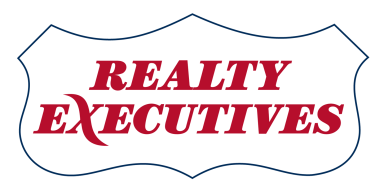
Burke County Housing Needs Assessment - 2023 Insights and Recommendations
Burke County Housing Needs Assessment - 2023 Insights and Recommendations
Burke County, North Carolina, has experienced significant demographic and economic shifts over recent years, creating unique housing needs. In a comprehensive Housing Needs Assessment conducted by Bowen National Research, key insights were identified, pinpointing current and future housing challenges and opportunities in the county. Here’s an overview of the findings and recommended strategies to address Burke County’s housing needs.
Housing Supply and Affordability
The county has limited availability in both rental and for-sale housing markets:
- Rental Market: With a high occupancy rate of 97.3%, vacancy in rental units is minimal, leading to increased rental costs. Since 2018, rental rates for common unit types have risen between 76% and 140%, with the largest gaps in affordable units priced below $891/month.
- For-Sale Market: Burke County’s housing inventory has decreased by almost half since 2018, resulting in a market with only 1.7 months of available inventory, well below the healthy range of 4–6 months. This low supply has pushed median home prices up by over 60% since 2019, reducing the availability of affordable options, particularly for first-time homebuyers.
Identified Housing Gaps
To address current and future needs, the study estimates a five-year housing gap of 4,822 units across rental and for-sale markets, with specific shortfalls in lower-cost rental housing and moderately priced for-sale homes. Meeting these demands will require both policy adjustments and development incentives to encourage affordable housing projects.
.

Burke County Housing Needs Assessment Continued
Community Feedback on Housing Needs
- Stakeholders highlighted the need for affordable workforce housing and targeted solutions for single professionals and young families.
- Employers noted that housing challenges impede staffing, increase costs, and hinder expansion efforts.
- Residents and Commuters expressed dissatisfaction with the local market’s limited options and high prices.
- Developers cited barriers such as financing, high labor/material costs, and zoning restrictions, limiting new construction.
Demographics and Population Trends
Between 2010 and 2020, Burke County's population slightly decreased, contrasting with North Carolina's overall growth. However, a modest increase of 0.6% was recorded from 2020 to 2023. Looking ahead to 2028, the county expects a 1% population rise, with a significant increase in senior households projected. Notably, over half of all households in Burke County are senior-led, pointing to a growing demand for senior-oriented housing options.
Economic Landscape
Burke County’s economy is heavily influenced by the manufacturing and healthcare sectors, providing essential employment opportunities. However, many workers face housing affordability issues due to lower wages compared to state averages. With an estimated 14,000 individuals commuting to the county daily for work, the demand for affordable, local housing remains high.
Housing Supply and Affordability
The county has limited availability in both rental and for-sale housing markets:
- Rental Market: A 2.7% vacancy rate in rental units has fueled and increase in rents from between 76% and 140%, with the largest gaps in affordable units priced below $891/month.
- For-Sale Market: Burke County’s housing inventory has decreased by almost half since 2018 and has pushed median home prices up by over 60% since 2019.
Recommended Strategies for Burke County
The Housing Needs Assessment offers several strategic recommendations:
- Set Clear Goals and Prioritize Action: The county should establish short- and long-term housing goals, focusing on policies to support new developments and affordable housing initiatives.
- Establish a Housing Committee: A committee or dedicated housing director could provide ongoing oversight and help implement the county’s housing policies and programs.
- Encourage Senior-Oriented Housing: Given the county’s aging population, senior-oriented housing—including affordable rentals and independent living options—should be prioritized.
- Policy Adjustments and Incentives: Burke County can promote development by modifying density regulations, waiving certain fees, and supporting low-income housing programs.
- Enhance Community Education and Outreach: Educating residents, stakeholders, and potential developers about housing programs and incentives can foster community support for affordable housing solutions.
- Explore Partnerships: Collaborating with nonprofits, private developers, and local businesses could improve housing access and affordability.
Burke County’s path to addressing its housing needs lies in a proactive approach, engaging stakeholders, and creating a supportive environment for new housing developments. By following these insights and recommendations, Burke County can improve housing options, making it a more accessible and thriving community for current and future residents.

©Copyright. All rights reserved.
We need your consent to load the translations
We use a third-party service to translate the website content that may collect data about your activity. Please review the details in the privacy policy and accept the service to view the translations.
